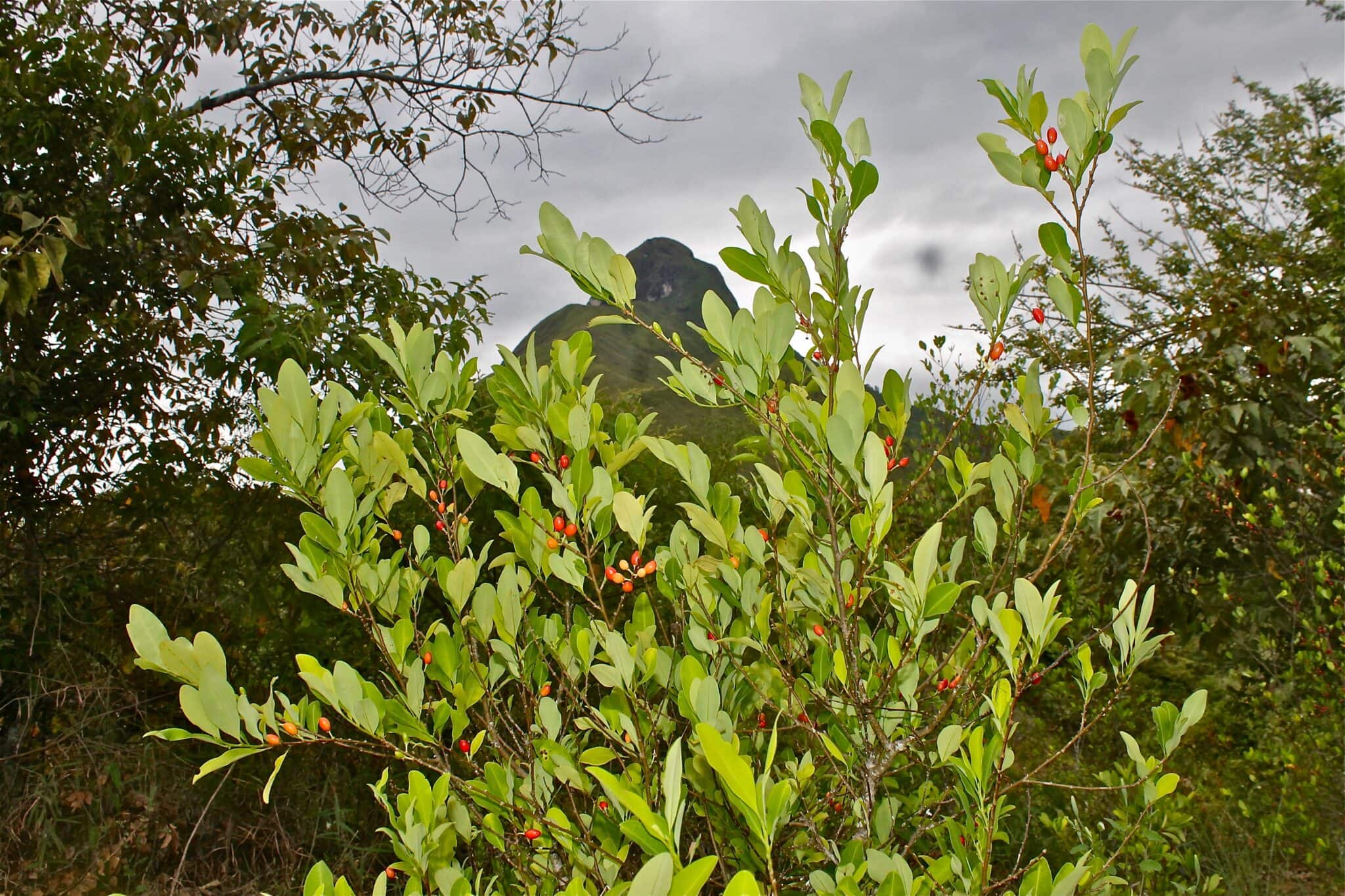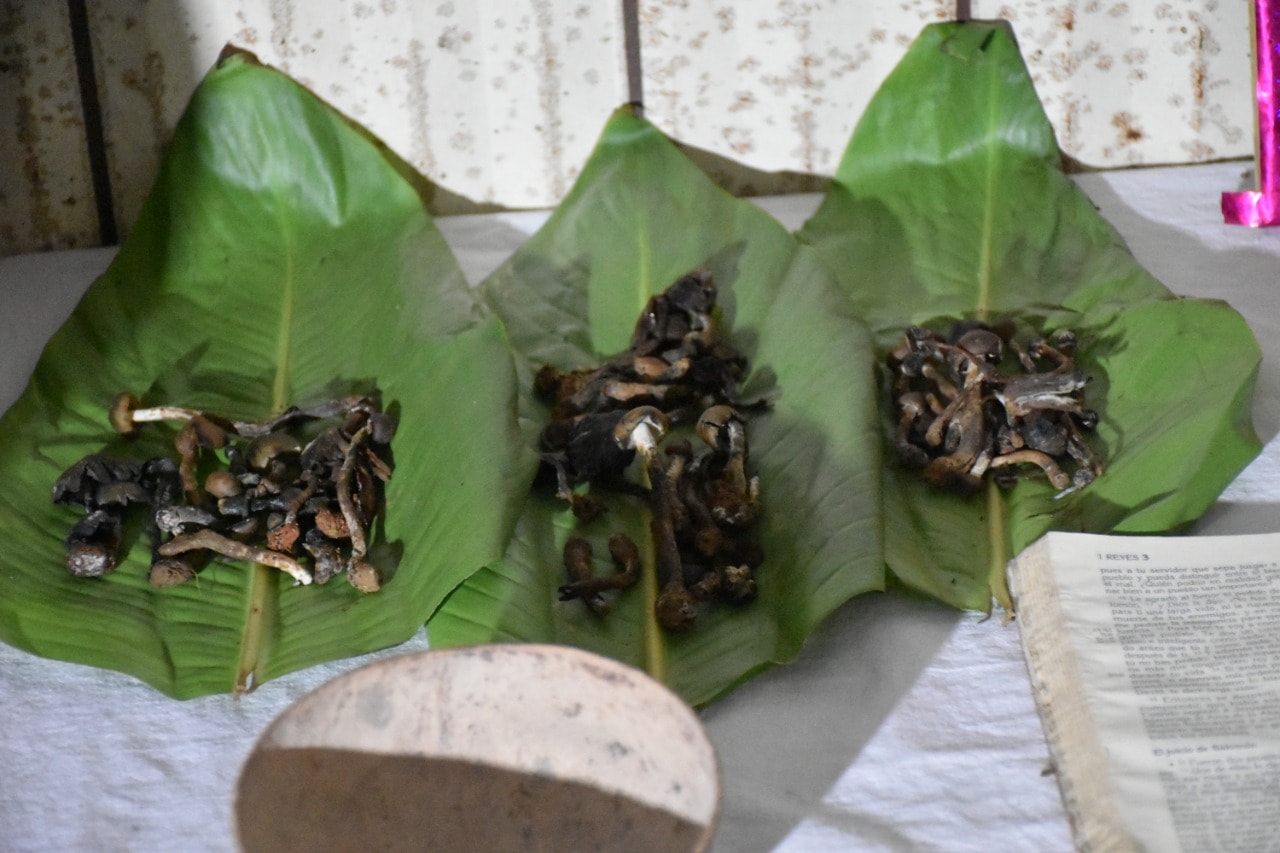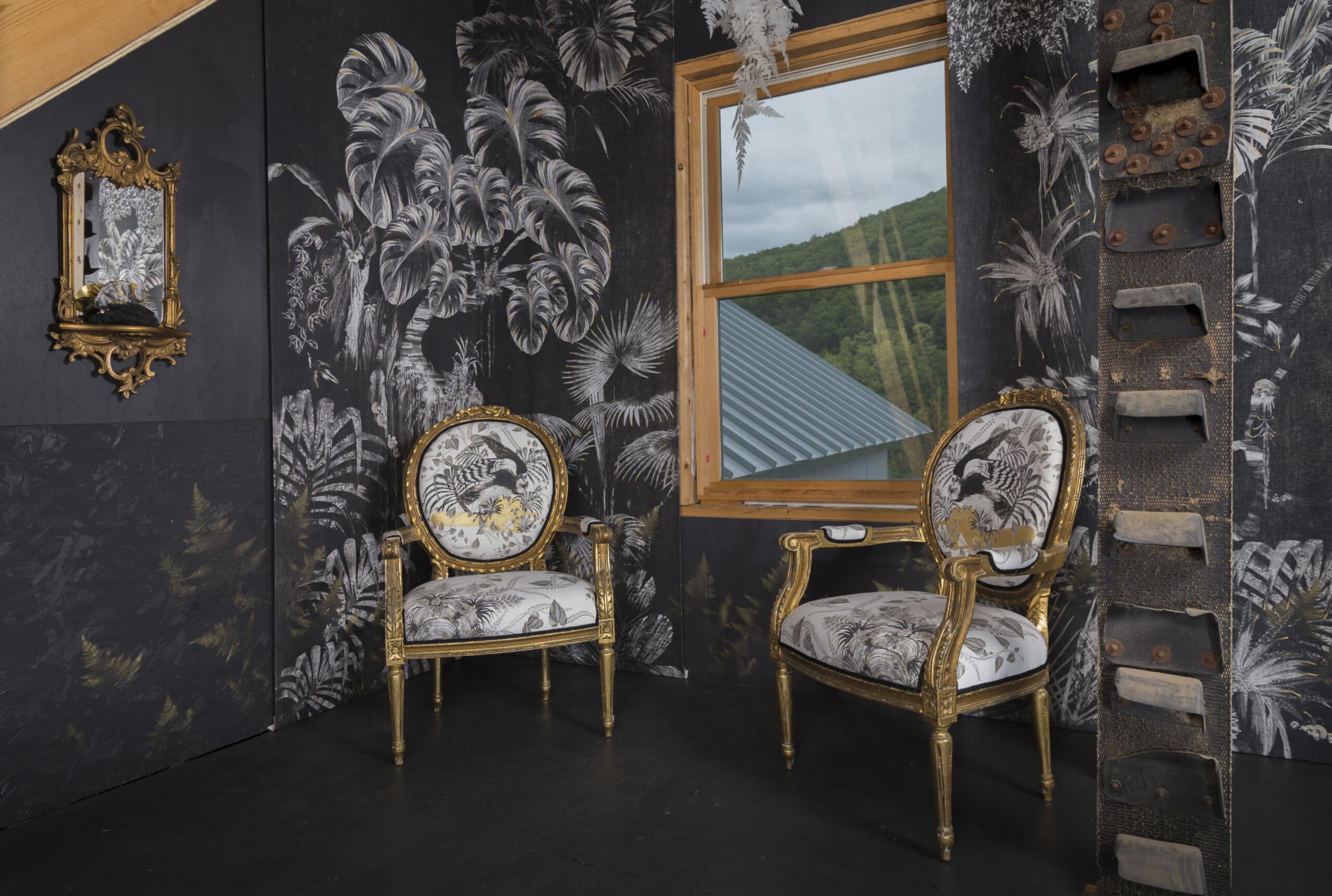
Coca chewing peasants: the dismissal of traditional coca leaf consumption
In Cauca, Colombia, mambear or coca leaf chewing is a tradition that is not exclusive to indigenous communities. The peasants in the south of the department, especially in the municipality of Bolívar, were known as Bolsiverdes (green bag people) because it was common to see them with a small Jigra or backpack woven with cotton or fique threads. Over time, it turned green with so much putting in and taking out roasted coca leaves, and mambe (coca powder), Coca from this area was traded and appreciated in other regions of the same department.
At the beginning of the war on drugs in Colombia, the State criminalized cultivation and consumption of this plant. This war was encouraged by including the coca leaf in Schedule I of the UN Single Convention on Narcotic Drugs. Some years later, the State recognized the right to mambear or chew coca leaf as a cultural tradition for indigenous communities in Cauca, the Sierra Nevada de Santa Marta, Putumayo and Vaupés. However, it excluded peasant communities in the same areas.
Herney Ruiz is a peasant leader from the village of Lerma in Bolívar, Cauca. At the age of fifteen, he joined the organization of his village because he had to “suffer everything that has to do with drug policy, all that persecution. The criminalization did not distinguish between peasants who grew coca leaves for traditional mambeo (chewing coca) and those who, by 1978, began to plant it for cocaine processing. In that year and until 1983, the coca bonanza took place throughout the country. In Lerma, this implied a series of changes: in the use of the land, in the way of relating to the plant, but above all in the arrival of drug trafficking.
With the bonanza came the violence that worsened around 1983 and began a process of intensification that lasted at least five more years. According to research carried out by Fabián Sevilla, an anthropology student at the University of Cauca, the local inhabitants, what happened is that the people “lost the meaning of life.” They say that people bought weapons, vehicles, and other objects with the bonanza. In the cantinas, it became pervasive for murders to occur because of “envy” or “bad business.” In any case, the way to deal with the situation was through community organization.
That is when Herney began his journey to become a leader. He says that the elders decided to meet clandestinely to discuss what was happening. They met with a young man from Lermeño who had just graduated from university, Walter Gaviria. In those meetings, they decided to start creating a school on three fundamental pillars: community outreach, education for youth and adults, and the promotion and dismissal of peasant culture. From 1990 to 2000, they reduced violent deaths in their territory to zero. With the creation of the school, constituting the Territorio de Paz y Convivencia (Territory of Peace and Coexistence) began, which in 2013 was recognized through a municipal decree.
Cecilia Paredes
Cecilia Paredes
One of the ways to achieve the third pillar on which this territory was constituted was by rescuing the traditional uses of the coca leaf, both medicinal and nutritional. Several years ago, the people of Lerma, together with the Tierra de Paz Foundation, began researching and developing projects around the production and use of coca leaf flour. Two years ago, they created the Coca Challenge, with which they gathered cooks from different parts of Colombia to explore the use of the leaf and flour made from Coca in Colombian cuisine together. They “managed to create more than 20 recipes” to redefine, highlight and revalue the significance of the coca plant in the country and the world.
Do you remember chewing coca leaf or how it was consumed when you were a child?
In the family, they have always been coca chewers and makers of a stone or lime, which is to chew the coca leaf, the mambe we call it. One saw that the elders chewed, but my first approach as a child was when I was five years old. I remember my mom took me to visit her grandmother, and she gave me a coca leaf boiled with cheese that I thought was very tasty. Then, the next memory is when I was six years old, and I had a stomach ache and what my mom did was send me to chew coca leaf. I grew up in a family of mambeadores and mambe producers. Still, I only cared about that when we started the Territorio de Convivencia y Paz de Lerma process in 1988.
What happened at that time?
In the 1980s, we lived through the coca boom, then a wave of violence. The violence resulted from all that persecution both among ourselves and the State because of the drug policy. At that time, they imprisoned our people, especially our elders. So we started an organizational process. The professor who came up with all this was Walter Gaviria, a graduate of the University of Cauca, who invited us to the meetings. There he told us that we did not have to feel ashamed for being what we were: peasants with a valid culture and knowledge, even if we had not gone to the universities, and that this was what characterized a territory.
That’s when I had to learn to chew coca leaves. I realized that if I sat down to chew, the grandparents would tell me that they would only talk among themselves if I didn’t chew coca leaf. I wanted to learn where it came from, why we had this tradition of chewing Coca as peasants, what a coca mambeada was like, how long it lasted, and for what it was made.
What was the time of the coca bonanza from 1978 to 1983 like?
In the ’70s, around 1975, the Peace Corps arrived. They were North Americans. They came to teach the coca base transformation process. I saw them, they were very tall people, with blue eyes and blond hair, they spoke something we didn’t understand.
My family has been mambeadora and traders of mambe and roasted coca leaf. That is important because it differentiates us from other farmers who cultivate the leaf today. We came from a Yanacona ancestry. Look, we took the roasted leaf to Almaguer, and from there, it was sent to San Agustin. In 78, and 79, my aunt used to sell a pound of roasted coca leaf: You had to harvest three pounds to get that and roast it in a clay pot. At that time, the pound was worth 5 cents (approximately 100 Colombian pesos today). In 1980, when the Peace Corps arrived, they paid 50 cents per pound of a raw leaf. By the end of 81, it was worth 500 pesos (112,000 Colombian pesos today).
That brought many people from other parts of Colombia to plant coca leaves. But also, people stopped growing and producing other things, and we even bought firewood in other municipalities. In addition, alcoholism and weapons arrived. After eradicating 83, people tried different ways of life, but guns and violence intensified. In the period from 83 to 87, almost a quarter of the population of our territory died violently.
Cecilia Paredes
Cecilia Paredes
Did you manage to disassociate or separate yourself from the cultivation of illicit coca leaf?
That absorbed our communities and has still absorbed our territory today with more strength. How did we do it? When it began to fumigate and eradicate, the same drug policy caused the communities to move to the capital cities. There came a time when some families that today make up what we call the agro-environmental school began to think: then we are leaving and where are we going and if we leave, what are we going to do, we are not prepared to live in a city. Many people began to leave. Some schools were closed, and the town became more and more alone. Then we realized that the only way to resist was to return to our essence: the first thing to do is continue planting Coca because we have less than a quarter of a hectare of land. The second is not to reach monoculture. And the third is to be able to maintain our native seeds.
At the same time that the Territory of Coexistence and Peace was created, an organization was born in the Colombian Macizo, the Comité de Integración del Macizo Colombiano (Integration Committee of the Colombian Massif, CIMA), which vindicates the rights of the peasant community. There we began to fight for some stakes and some mandates; not only the Lermeños, but all of us who were part of the organization. Among those mandates was the significance of traditional coca leaf cultivation.
Today, the cultivation of Coca for narcotics has not ended, but we achieved something bigger with such a small exercise. In the ’80s and ’90s, if we talked about Coca, it was about the peasant who is a narco-terrorist. When they spoke about coca communities, they did not recognize the peasant farmer, much less the urban inhabitant from rural cultures, who chewed, used, or knew the coca leaf. Now they do.
Of course, it was thought and still is believed that mambear is an exclusively indigenous activity, and in fact, of some peoples in particular.
Yes, then, in those discussions in CIMA and the spaces with our indigenous companions, we said, well, then the community of my village knows mambeo, we have a whole culture, and we are not indigenous. So, what are we? We were also born with Coca.
These discussions led us to defend and dignify the use of the traditional coca leaf in peasant communities of indigenous origin. That is when we began the struggle to make known to the country that other cultural expressions in Colombia chewed the coca leaf and used it in traditional medicine.
Was that when the Coca Alliance for Peace appeared?
In the 1999 strike in Cauca, we were mobilized for 26 days. One of the things we talked about was the importance of decentralizing education. They challenged CIMA, and the organization brought some professionals such as Dora Troyano. I met her in a workshop teaching how to make coca leaf flour between 2001 and 2002. And I invited her to our territory. She did a workshop with 20 people and taught us a different way of making flour and how to make bread, but at that time, they were very hard, and the cookies were tooth splitting.
We started a sisterhood with her and continued our explorations from that point on. In 2016 she invited Sena to investigate the coca leaf to prepare liquid and solid fertilizers. During those training, she asked 20 chefs to see our consumption of the leaf in food, and with that group, the Tierra de Paz Foundation, led by Dora and the people of Lerma, began to develop recipes and gourmet dishes for large restaurants. This became the Coca Challenge. Now there is a recipe book, and there is a dish called, for example, the Lerma brownie.
Is that when the Alianza Coca para la Paz (Coca Alliance for Peace) appeared?
In the 1999 strike in Cauca, we were mobilized for 26 days. One of the things we talked about was the importance of decentralizing education. They challenged CIMA, and the organization brought some professionals such as Dora Troyano. I met her in a workshop teaching how to make coca leaf flour between 2001 and 2002. And I invited her to our territory. She did a workshop with 20 people and taught us a different way of making flour and how to make bread, but at that time, they were very hard, and the cookies were tooth splitting.
We started a sisterhood with her and continued our explorations from that point on. In 2016 she invited Sena to investigate the coca leaf to prepare liquid and solid fertilizers. During those training, she asked 20 chefs to see our consumption of the leaf in food, and with that group, the Tierra de Paz Foundation, led by Dora and the people of Lerma, began to develop recipes and gourmet dishes for large restaurants. This became the Coca Challenge. Now there is a recipe book, and there is a dish called, for example, the Lerma brownie.
What is the future for the territory?
It is complicated to compete with Coca as a narcotic because of all that it means. But the future is to continue: first, trying to hopefully one day be recognized so that we are not persecuted for being coca leaf growers for life, as we say. Two is to continue researching, promoting, and improving what we are doing because what we do here has been done with our fingernails and much love. We want to create a coca leaf museum. We also want to have a bio factory to prepare liquid and solid fertilizers so that the community is the school. We want to continue cultivating and producing, for example, the flour, and we are the marketers. My dream is also that the nutritional value of the coca leaf is recognized, which would avoid so much malnutrition.


